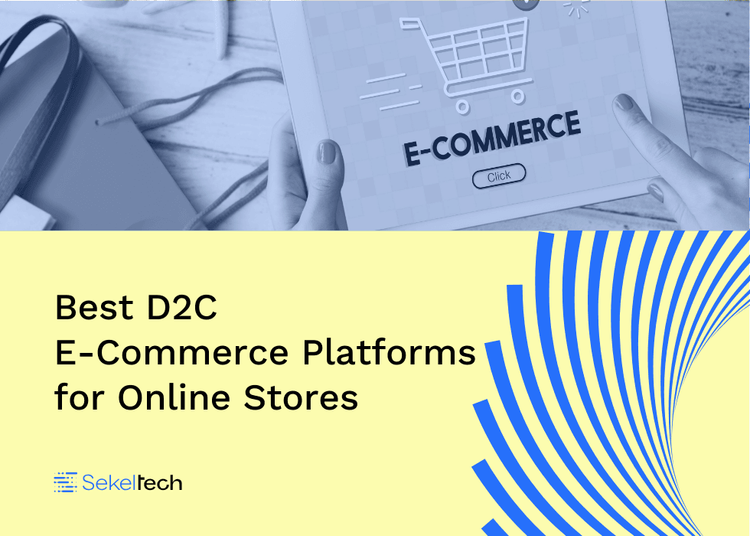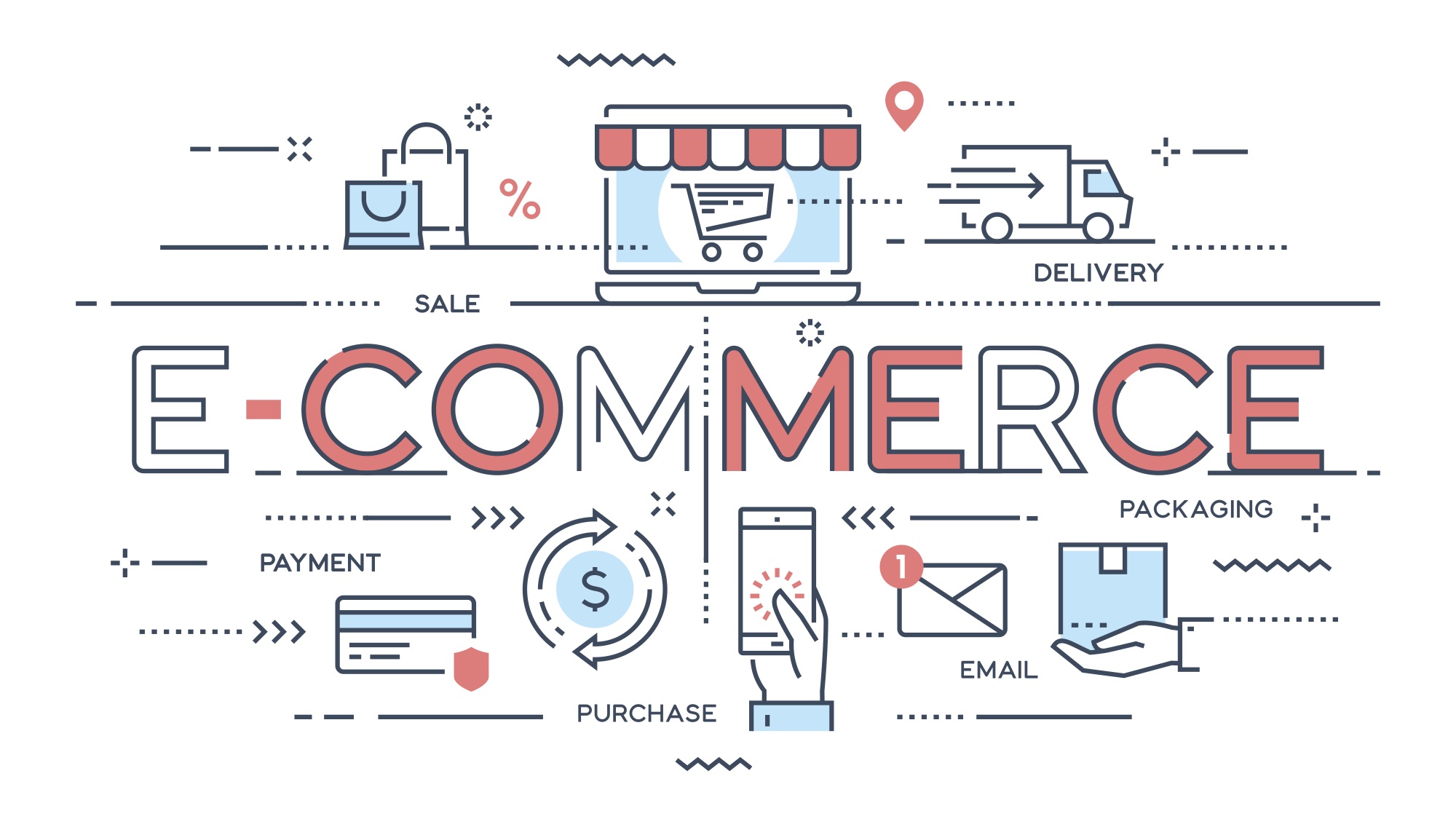Discovering the Possible of D2C Ecommerce: A Comprehensive Guide for Services
The D2C ecommerce version presents a considerable change in just how brands involve with customers. It enables firms to bypass standard retail networks, fostering much deeper links and potentially enhanced revenue margins. This technique is not without its complexities. Recognizing the subtleties of D2C ecommerce is crucial for brand names intending to flourish. What techniques can they take on to browse this advancing landscape efficiently? The responses might redefine their company strategies.
Recognizing the D2C Ecommerce Version

Trick Perks of D2C Ecommerce for Brands
The D2C ecommerce design uses brands considerable benefits, particularly relating to boosted earnings margins. By removing intermediaries, firms can maintain a larger share of sales income. Additionally, this direct partnership with customers fosters enhanced brand loyalty, encouraging repeat acquisitions and lasting involvement.
Enhanced Revenue Margins

Boosted Brand Name Loyalty
Structure on the monetary advantages of D2C ecommerce, enhanced brand commitment emerges as another necessary advantage for business engaging straight with consumers. By establishing a straight connection, brand names can foster much deeper relationships with their customers, gaining insights into behaviors and choices. This straight communication permits even more tailored marketing techniques, which reverberate strongly with customers. Furthermore, brand names have the chance to control their messaging and customer experience, enhancing brand name values and constructing trust fund. When consumers really feel an individual connection, they are much more most likely to return, advocate for the brand, and take part in area engagement. Inevitably, enhanced brand name commitment not just drives repeat purchases however also cultivates a passionate client base, more strengthening a brand name's placement on the market.
Difficulties Faced by D2C Brands
D2C brand names come across a number of considerable difficulties that can impact their success. Supply administration concerns can result in stock shortages or excess, complicating procedures and consumer contentment. Furthermore, marketing budget restrictions typically restrict the ability to effectively get to and engage target audiences.
Stock Management Issues
Efficient stock management provides an awesome challenge for several brands running in the direct-to-consumer (D2C) space. These brands typically face fluctuating need, which can lead to overstock or stockouts, inevitably affecting customer complete satisfaction and earnings. In addition, the lack of sophisticated inventory radar can result in inconsistencies between real stock degrees and reported information, making complex order fulfillment. The diverse series of items D2C brands commonly provide additionally complicates inventory monitoring, as variations in shades, styles, and dimensions call for even more thorough oversight. Additionally, several D2C services might struggle with minimal warehousing abilities, causing ineffective use space and resources. Effective stock monitoring stays a vital obstacle for D2C brand names aiming for lasting development and functional performance.
Advertising And Marketing Budget Constraints
Steering marketing budget constraints is a substantial challenge for lots of direct-to-consumer (D2C) brand names. Minimal funds typically restrict these firms' capability to buy all-encompassing marketing strategies, resulting in lowered exposure in an open market. D2C brand names frequently come to grips with the demand to make the most of roi (ROI) while targeting specific audiences efficiently. This challenge is aggravated by climbing expenses in digital advertising and marketing and the need to designate funds across multiple networks, including social media, online search engine, and e-mail advertising. As a result, numerous D2C brands should innovate affordable advertising options, leveraging organic growth techniques and influencer partnerships. Inevitably, effectively maneuvering these spending plan restrictions is important for maintaining growth and attaining long-term earnings in the evolving ecommerce landscape.
Techniques for Developing a Successful D2C Ecommerce Company
As consumers increasingly look for straight connections with brands, establishing an effective D2C ecommerce organization calls for a strategic technique that focuses on customer interaction and count on. more info One reliable approach is to produce engaging brand narratives that reverberate with target audiences, cultivating psychological links. Utilizing social media sites systems can enhance presence and help with two-way interaction, permitting brand names to involve directly with customers.Moreover, individualized experiences via tailored advertising and marketing initiatives can considerably boost client retention and commitment. Applying loyalty programs and providing exclusive offers can even more incentivize repeat purchases.Streamlining the purchasing procedure is necessary, ensuring an user-friendly interface that enhances the buying experience. Furthermore, clear communication regarding delivery and returns develops depend on and urges customer confidence.Finally, proactively seeking consumer responses and responding to it shows a commitment to enhancement and customer fulfillment, critical aspects in the competitive D2C landscape.
Leveraging Innovation for Boosted Client Experience
In today's affordable D2C ecommerce landscape, innovation plays an essential function in forming client experiences. Organizations progressively make use of innovative tools such as man-made intelligence, chatbots, and personalized algorithms to boost interactions and improve the buying process. By incorporating these innovations, brand names can provide customized product suggestions based on individual choices and buying behaviors, fostering a more engaging experience.Moreover, responsive site layouts and mobile applications guarantee that consumers can access services perfectly throughout various gadgets. Improved repayment options, consisting of digital budgets and one-click check outs, further streamline deals, making it less complicated for consumers to make purchases.Data analytics likewise allows services to collect insights into client actions, enabling for constant enhancement of solutions and offerings. Overall, leveraging technology not only boosts customer complete satisfaction however also grows commitment, ultimately driving long-lasting success in the D2C ecommerce field.
Advertising Tactics to Drive D2C Sales
Exactly how can brand names successfully catch the interest of customers in a saturated market? To prosper in the direct-to-consumer (D2C) landscape, brands must use targeted advertising and marketing techniques. Making use of social media systems, brands can engage consumers through interactive material, influencer partnerships, and user-generated articles. Personalized e-mail campaigns can additionally promote a feeling of connection, supplying customized promotions based upon customer actions and preferences.Moreover, storytelling plays a vital function in distinguishing a brand name's narrative, making it relatable and memorable. Brand names should spend in seo (SEARCH ENGINE OPTIMIZATION) to improve visibility, guaranteeing their products are conveniently discoverable online. Furthermore, leveraging information analytics allows companies to refine their advertising strategies and understand customer patterns better. Inevitably, a multi-channel approach that combines creative thinking with data-driven insights can greatly increase D2C sales, enabling brand names to stick out in a congested marketplace.
Future Trends in D2C Ecommerce
With the rapid evolution of technology and consumer preferences, the future of D2C ecommerce is poised for considerable improvement. Emerging fads indicate a shift towards hyper-personalization, where brand names leverage information analytics to tailor offerings to specific customer demands. This customization enhances customer experiences, cultivating commitment and engagement.Moreover, sustainability is becoming an important aspect, with customers increasingly favoring brands that focus on environment-friendly techniques - D2C Ecommerce Agency. Business are expected to adopt transparent supply chains and sustainable products to fulfill this demand.The integration of man-made knowledge and increased fact will in addition change the buying experience, enabling customers to picture products in their settings prior to acquisition. In addition, social commerce is expected to grow, as platforms like Instagram and TikTok help with smooth shopping experiences straight within social media.These fads collectively symbolize a vibrant future for D2C ecommerce, stressing customer-centric methods and ingenious technologies that redefine customer communications
Often Asked Concerns
What Industries Benefit A Lot Of From D2C Ecommerce?
The current inquiry highlights industries that thrive with direct-to-consumer (D2C) ecommerce. Extremely, style, appeal, electronic devices, and food industries utilize D2C designs to raise brand name commitment, boost consumer relationships, and optimize earnings margins effectively.
How Do Delivering Costs Affect D2C Prices Approaches?
Shipping costs greatly influence D2C prices methods. Companies need to balance these expenditures with competitive pricing, taking into consideration consumer assumptions and earnings margins. Effective administration of delivery can enhance consumer complete satisfaction and drive sales in direct-to-consumer designs.
What Payment Choices Should D2C Organizations Offer?
D2C organizations ought to offer varied payment alternatives, including credit/debit cards, electronic purses, and buy currently, pay later services. This selection boosts customer convenience, raises conversion rates, and satisfies different consumer preferences in the online shopping landscape.
Just How Can D2C Brands Deal With Client Returns Efficiently?
D2C brands can manage consumer returns efficiently by carrying out straightforward return policies, using prepaid shipping labels, and making certain punctual reimbursements (D2C Ecommerce Agency). Clear interaction and streamlined procedures boost customer fulfillment and motivate repeat organization
What Lawful Factors To Consider Exist for D2C Ecommerce Procedures?
Lawful factors to consider for D2C ecommerce operations include compliance with consumer protection regulations, data personal privacy policies, copyright legal rights, and taxes needs. Brand names need to browse these intricacies to stay clear of legal pitfalls and guarantee smooth procedures. By getting rid of intermediaries, D2C brands can offer affordable rates and foster a more intimate connection with their customers.The D2C design is characterized by its reliance on digital systems, enabling brand names to make use of social media, on-line marketplaces, and their very own internet sites to involve with customers straight. D2C ecommerce promotes the collection of useful client data, making it possible for brand names to tailor their offerings and advertising techniques efficiently, ultimately driving sales and boosting margins. Furthermore, brand names have the possibility to manage their messaging and consumer experience, enhancing brand values and constructing count on. As consumers progressively look for direct connections with brands, developing an effective D2C ecommerce service requires a calculated strategy that prioritizes consumer engagement and trust fund. D2C brand names can handle client returns efficiently by carrying out easy to use return policies, using pre paid shipping tags, and ensuring prompt reimbursements.